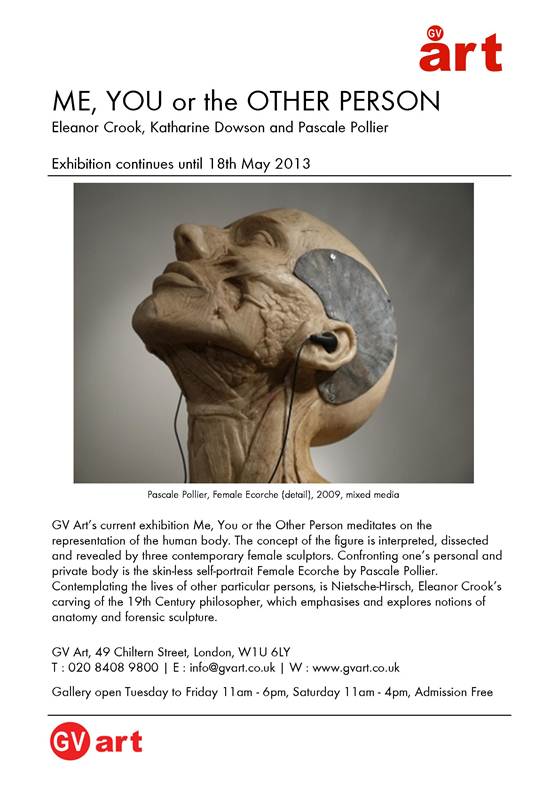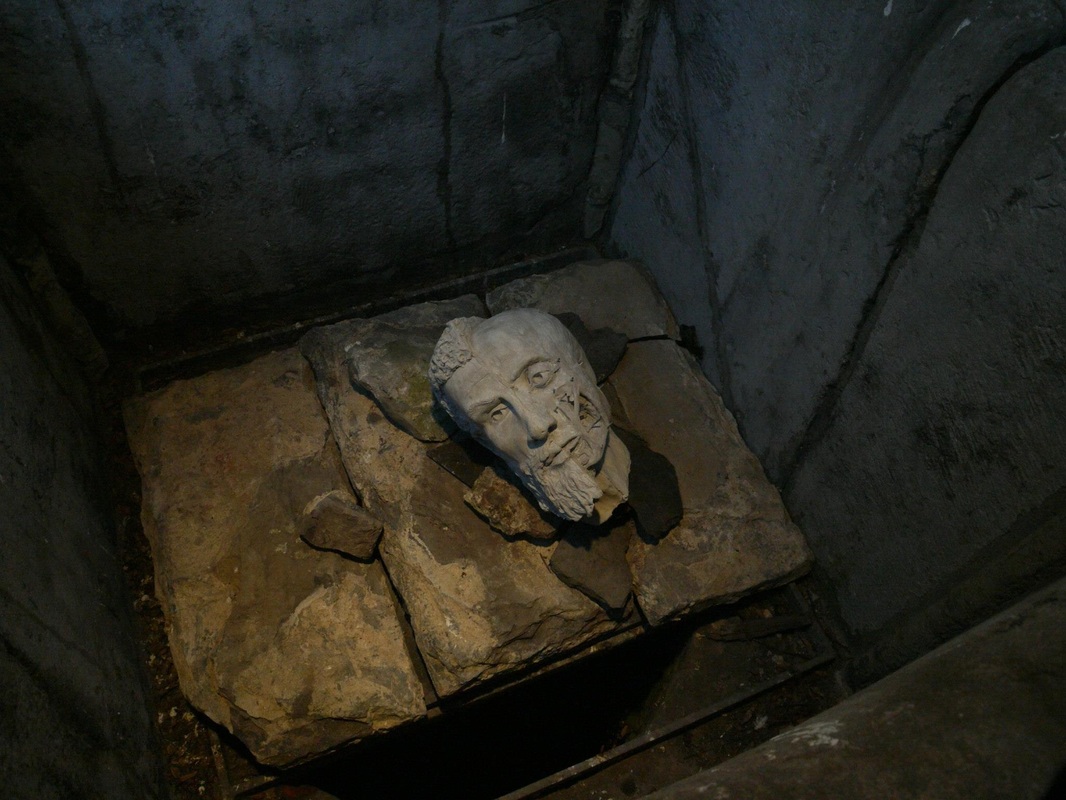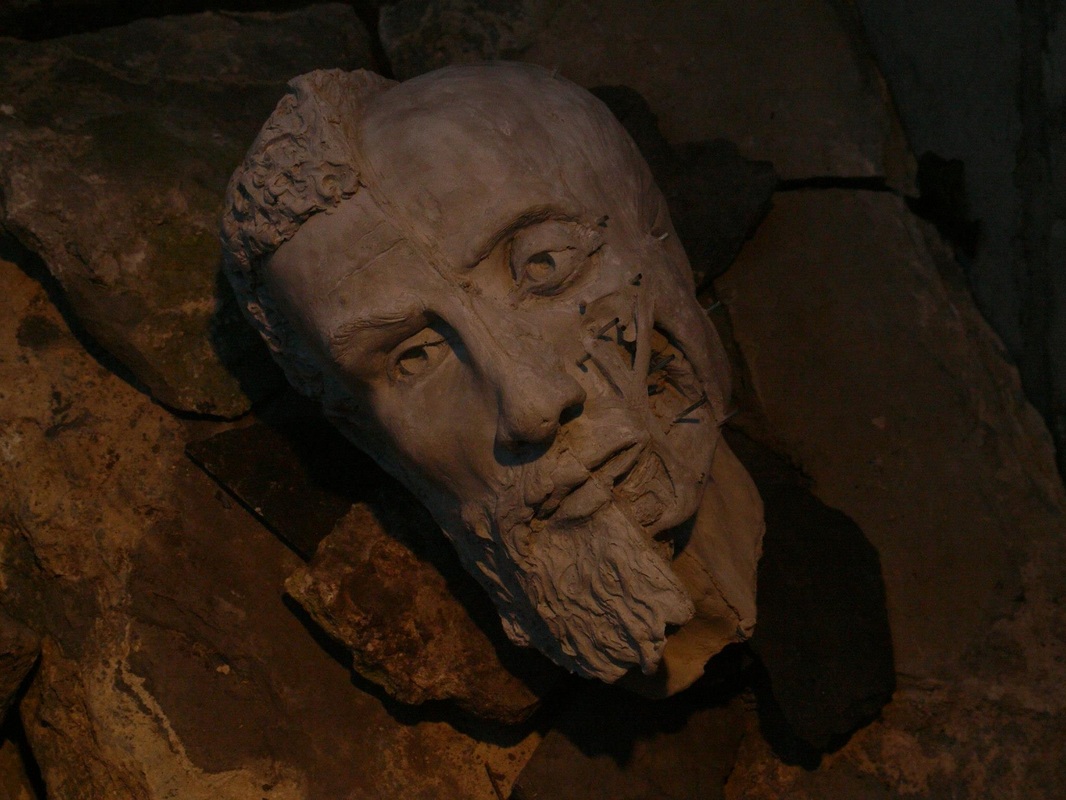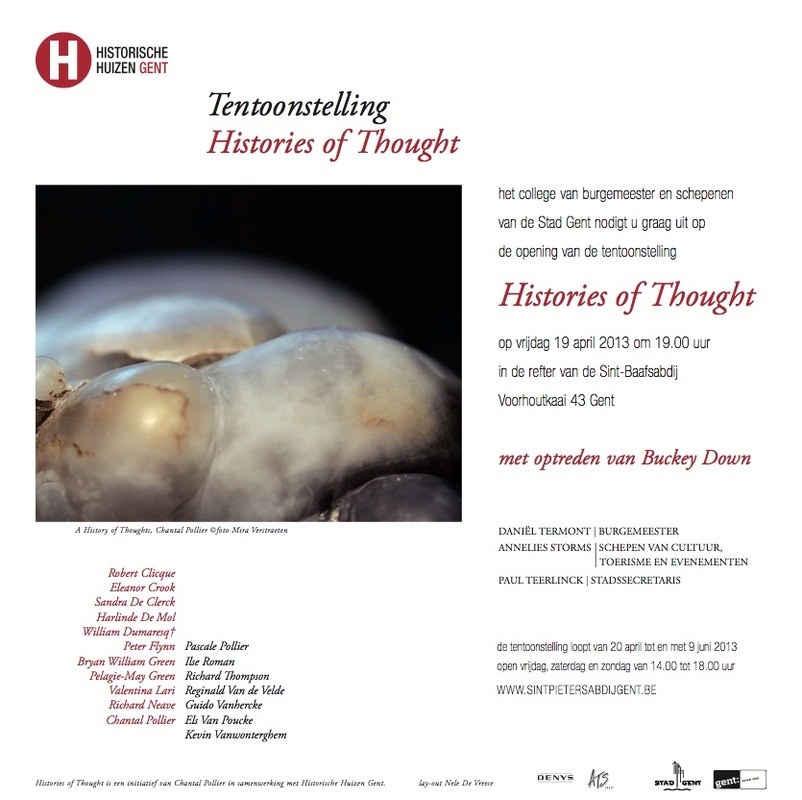|
‘FACIAL RECONSTRUCTION ANDREAS VESALIUS’ , 2013
Pascale Pollier en Richard Neave In het vooruitzicht van de 500ste verjaardag van de geboorte van Andreas Vesalius in 2014, werken Richard Neave en Pascale Pollier aan een gezichtsreconstructie van Andreas Vesalius als deel van een groter monument. Ze gingen op zoek naar Vesalius zijn graf met zijn stoffelijke resten en kwamen op het Griekse eiland Zakynthos terecht. De verhalen van hoe Vesalius stierf, zijn gehuld in mysteries, zijn graf is voorlopig onvindbaar. Twee mogelijke locaties zouden het geheim van zijn dood en begrafenis kunnen onthullen: één ervan is een oude Fransiscanen abdij waarvan enkel de waterput bewaard is gebleven. De waterput in de Sint-Baafsabdij leek de perfecte plaats om de reconstructie van Vesalius zijn hoofd te tonen. photo's courtesy of Eleanor Crook
0 Comments
 A review by Art and Science writer Johanna Kieniewicz Pascale Pollier – The body physical Pascale Pollier, Female Écorché, 2009, mixed media. Image courtesy of the artist and GV Art gallery, London The physical aspects of the body are, indeed, the most obvious and most immediately conducive to sculpture and portraiture—but it is a rare artist who can make us feel them. It’s not just about skill in re-representing what we see in the mirror, it’s about what’s beneath the surface of the skin. Female Ecorche by Pascale Pollier is an unusual self-portrait, one that – literally – penetrates beneath the skin, with the muscles of the body exposed in exquisite detail. In the sculpture, headphones are set on the ears but the wire is connected to the heart; it seems to inhabit that inner world we experience when in contemplation, or just trying to block out the external world on the Tube. Pollier’s Day of the Lipids was moving in an entirely different way: dealing with plastic surgery in Western culture, liposuction needles are connected to a network of tubes pumping something resembling blood. It is a visceral installation that makes us feel the body through seeing it. The experience isn’t entirely pleasant, but then neither are our bodies, necessarily, when it comes down to it. |
Pascale PollierArt and Science in symbiosis Archives
April 2024
Categories
All
|





 RSS Feed
RSS Feed
